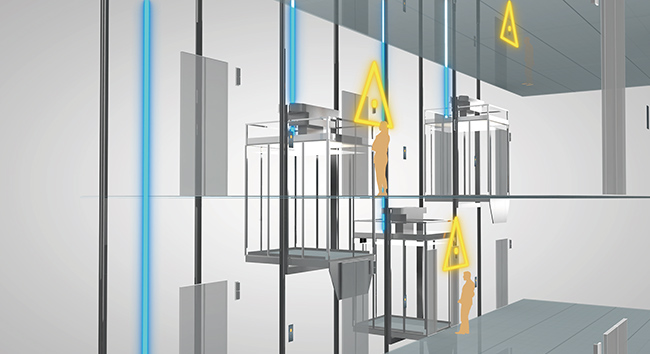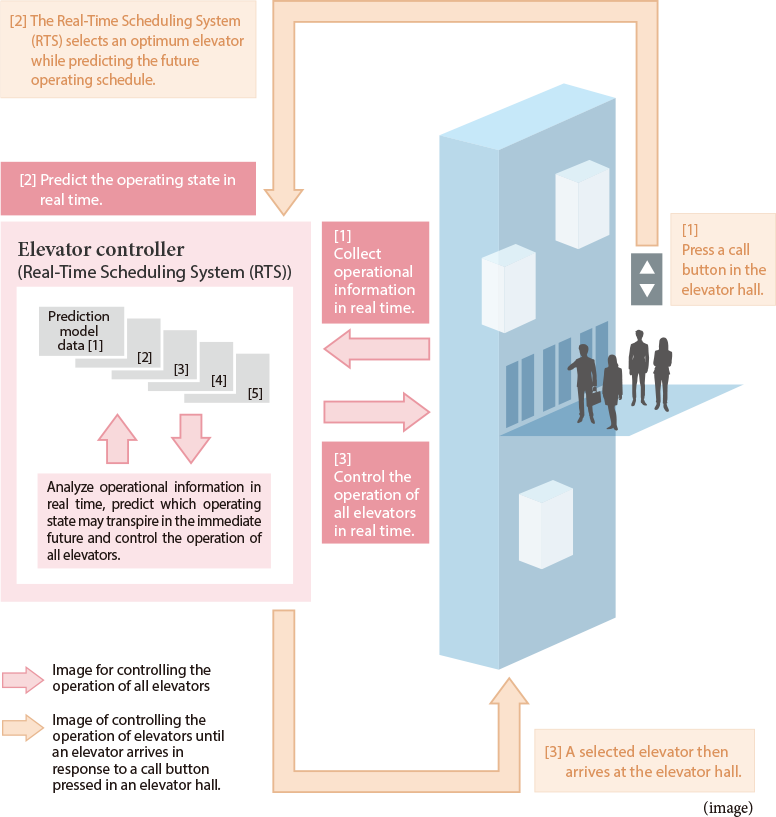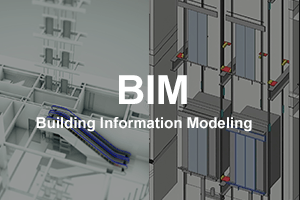Function & OptionGROUP CONTROL SYSTEMS
The elevator analyzes the "now" of the building !
We will predict "future traffic conditions within the building" and provide the optimum elevator.

Real-Time Scheduling System
We will always analyze the very latest elevator operating conditions to predict the future elevator service situation, select the most suitable elevator and deliver it to the point of use.
Toshiba Elevator Group Control System: The Real-Time Scheduling System (RTS) not only shortens the waiting time of the elevator but also allows us to provide various environmentally friendly driving functions such as "Power saving function" and "Power saving allocation function".
◯:STANDARD △:OPTIONAL ✕:Inapplicable specifications
| Descriptions | Number of elevator application | Number of the maximum application floors (Note1) | Model No. | ||
|---|---|---|---|---|---|
| GA-2000 | GA-200 | GA-20 | |||
"Real time scheduling system (RTS)" can be applied to 12 elevators maximum with the latest features such as "Power saving function" and "Power saving allocation function". |
3 to 12 units |
128 stops |
◯ |
|
|
It is a group control system applicable for medium and small sized buildings capable of up to 6 elevators, taking over the design concept of the top model of the group control systems. |
3 to 6 units |
64 stops |
|
◯ |
|
This is a group control system for medium and small sized buildings that meet the specifications of basic functions such as "Fuzzy control " and high-sensitivity allocation to shorten elevator latency. |
3 and 4 units |
40 stops |
|
|
◯ |
※Note 1: An express zone is not included. The actual number of applications is based on each elevator models .
| Functions | Explanation | Model No. | ||
|---|---|---|---|---|
| GA-2000 | GA-200 | GA-20 | ||
Real-Time Scheduling System (RTS) |
A new hall calls assignment procedure that can assign a car for a hall call efficiently by estimating the arrival of time to each the floor considering the future occurrence of passenger. |
◯ |
✕ |
✕ |
Self-learning system |
Analyzes and stores traffic demand by time period, and automatically tunes the control parameters used for fuzzy control and similar. |
◯ |
✕ |
✕ |
High-sensitivity car assignment |
A hall calls assignment procedure using the fuzzy control method. |
✕ |
◯ |
◯ |
Expert system |
Specialized experience and expertise are coded into rules, and the optimum rules selected to offer service that best meets humans' psychological needs. |
◯ |
◯ |
◯ |
Leading edge and high-spec “Elevator Group control systems” is monitor the current building environment and predict the future.
To optimize elevator control, analyzing the movements of elevators in a building real-time and controlling them while predicting what may happen in the immediate future is crucial. Toshiba has developed the Real-Time Scheduling System (RTS) to control elevators properly and included it in elevator group control systems.
Image of control by the Real-Time Scheduling System (RTS)

- Up-peak operation
During the morning rush, returns cars to the main departure floor and automatically spaces departures.
- Down-peak operation
Automatically deploys standby cars to upper floors to respond more efficiently to demand for descending elevators.
- Up-peak split-zone operation (Optional)
Splits the group into cars serving upper and lower floors exclusively, limiting the destinations into zones to handle the morning peak volume more efficiently.
- Lunchtime split-zone operation (Optional)
Splits the group into cars serving the upper and lower floors exclusively, limiting the destinations in to zones to handle the lunchtime peak volume more efficiently.
- Enhances comfortable operation
The least crowded cars are assigned.
- Check-in services
Reserves a standby car with an open door at the front desk floor during check-in hours.
- Check-out service
Automatically deploys more standby cars to upper floor s to respond more efficiently to demand for descending elevators.
- Open door waiting on lobby floor (Optional)
Reserves a standby car with an open door at the lobby floor.
- Banquet hall floor service (Optional)
Concentrated service for a banquet hall floor to meet temporary intensive demand.
- Going out service
Sends more cars for standby to the upper floors to respond more efficiently to demand for descending elevators during going-out hours in the morning.
- Coming back service
Sends a car to the entrance floor with an open door during homecoming hours in the evening.
- Morning-peak operation
In hospitals, many cars are often congested with incoming staff during morning hours. Demand for ascending elevators is effectively responded to, like those in office buildings.
- Evening-peak operation
Meets the demand for traffic generated by interviews conducted in the evening.














